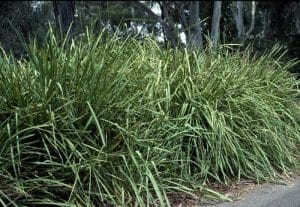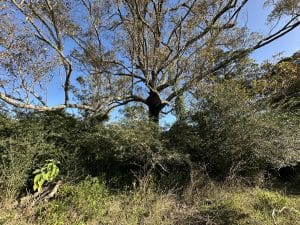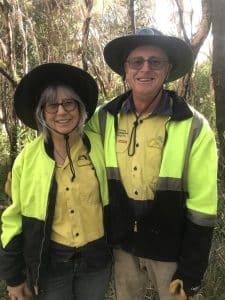
Long Nosed Bandicoot- Image Bill Bouton
Found yourself tripping in little conical holes in your backyard lately? You may be sharing land with the little omnivorous marsupial, the Long-Nosed Bandicoot (Perameles nasuta).
These little marsupials are around 31-43 cm in size, weighing up to 1.5 kilos. They have pointy little ears, grey/brown fur with a bristly coat, a white belly and a short tail.
Long-nosed Bandicoots have a diverse diet of insects, insect larvae, earth worms, plant tubers and fungi. They forage at night, in areas with loose soils digging into the ground to find their grub and these areas sometimes include suburban backyards. During the day, they sleep in a well concealed nest, a shallow hole lined with leaves and grass which can be under vegetation, hidden with soil and debris.
Understandably, many people find bandicoot holes quite annoying, especially when trying to care for a lawn or kick a ball around. But please don’t consider the bandicoot a pest! They can be beneficial to your lawn and garden, as they eat a range of destructive insects before they cause damage. They will generally move on to somebody else’s lawn or nearby bushland before they do any real harm to your lawn.
If you have bandicoots and want them to move on sooner than they are ready, there are a few things you can do to deter them. Being nocturnal, they don’t like bright lights so you can use a bright light in your yard. You can also try spreading dynamic lifter or chicken poop around your yard as they have a strong smell and bandicoots don’t like it. Please don’t use pesticides around your yard to deter bandicoots.
Bandicoots don’t always have the best reputation, maybe it’s because they can resemble a large rat (bandicoots are not rodents, they’re marsupials), seem abundant when they’re in certain areas and can make holes in people’s lawns. They are often overlooked by humans and shouldn’t be. Through their digging in the soil, they play a vital role in maintaining healthy ecosystems- they help to improve the soil by turning over organic matter, increasing the rate of leaf litter decomposition, soil production and nutrient cycling.
If you have the space to help them out, create habitat for them by planting sedges, grasses, and herbs like Lomandra or Dianella species, as well as understory shrubs up to 3 meters high. They don’t mind dead plants and fallen branches. Keep pets inside at night.
If you find an injured bandicoot call-
FAWNA – NSW’s Mid North Coast LGAs of MidCoast, Port Macquarie-Hastings and Kempsey – 02 6581 4141
Or
WINC (Wildlife in Need of Care) – Port Stephens, southern Great Lakes, and southern Dungog LGA’s – 1300 946 295





